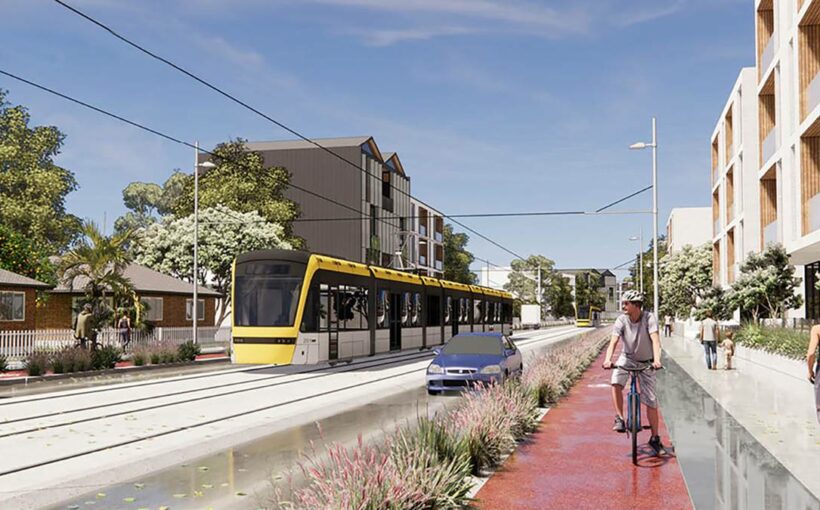Aucklanders will not learn anything they don’t already know when public consultation on Auckland’s troubled light rail project begins today.
The establishment unit for the most complex infrastructure project ever undertaken in New Zealand is setting out to build a “social licence”, ie, public support.
But when it comes to giving Aucklanders details on the mode of transport, the route, number of stations, level of disruption and cost, there will be little more than what Prime Minister Jacinda Ardern announced back in 2017.
Since Ardern promised Labour would build light rail to the airport and West Auckland within 10 years, Aucklanders have been shut out of a shambolic process that ended when NZ First pulled the pin on a project last year that leader Winston Peters said would cost up $15b and lead to a “decade of chaos”.
From today, Aucklanders will be able to go to a website set up by the establishment unit, headed by former NZ Transport agency executive Tommy Parker and chaired by planner Leigh Auton.
About the only detail on the site will be a map showing the proposed route from the central city to the airport. There will be options for running light rail along Dominion Rd and Sandringham Rd through the isthmus and connections to Mt Roskill, Onehunga and Mangere. None of this information is new, apart from a small change to possibly run light rail through the Mangere town centre.
The establishment unit is also considering a connection to the city’s universities, but again this has been flagged and won’t come as a surprise.
There is no detail about how and where light rail will run from Wynyard Quarter and through the city centre, despite 70 bureaucrats and consultants working on the details.
Neither former Transport Minister Phil Twyford and current Transport Minister Michael Wood have been able to give central city businesses and the public details of where and how light rail will run through the most congested metropolis in New Zealand.
Nor is there any news about how the project will deal with years of disruption in the central city and along the 23km route and whether affected businesses will receive financial help or suffer the same mental and financial stress of shopkeepers and landlords impacted by the City Rail Link.
There is only sketchy information about the two mode options of light rail, modern-day trams that run at street level; and light metro that runs above or below ground and does not mix with traffic. Either option will have big impacts for different reasons, and light metro will cost considerably more than light rail. The number and location of stations is not being shared with the public.
Parker and Auton said their job is to build public support for light rail, not to put any meat on the bones for Aucklanders to digest.
This appears to be at odds with Transport Minister Michael Wood, who relaunched light rail in March, saying Aucklanders had been shut out of the project and promised more openness.
“I don’t want to be making decisions in six months that you have not heard about,” he told a meeting in Auckland on May 7.
Said Auton: “We are working through the detail of what light rail could be but we are not in a position to have that conversation”.
Parker said what was really missing in the light rail project is around the “social licence”, saying there had been no consultation with the public and very little public awareness.
He said what the unit was doing this week was starting a big conversation with Local Boards, youth groups, the disability community and other stakeholders to get across that light rail is not just a public transport project but about urban form.
Ten public events are being held across the city between July 17 and August 29, along with workshops for stakeholders and material being translated into seven languages.
It is primarily around the “why”, like community opportunities and where housing development can go in the future, said Parker, who had a hand in building the Waterview tunnel.
He and Auton said this would feed into an indicative business case and some high-level information around routes that will go to the Government by the end of September for the Cabinet to consider in November.
Source: Read Full Article

/cloudfront-ap-southeast-2.images.arcpublishing.com/nzme/BCP6KKVCXJJHJG6DMIIUPT4GDA.jpg)
/cloudfront-ap-southeast-2.images.arcpublishing.com/nzme/KZOGCICJLK4BXOQIMCAL2OGUBI.jpg)
/cloudfront-ap-southeast-2.images.arcpublishing.com/nzme/KF6URAYX47NM4NY23QPEJPJ53A.jpg)
/cloudfront-ap-southeast-2.images.arcpublishing.com/nzme/W64IMQGRG5JE7BDPW7SQLJCP4Q.jpg)
/cloudfront-ap-southeast-2.images.arcpublishing.com/nzme/OFIZ5KFWDPQG3PNDC6Y74IVWTI.jpg)